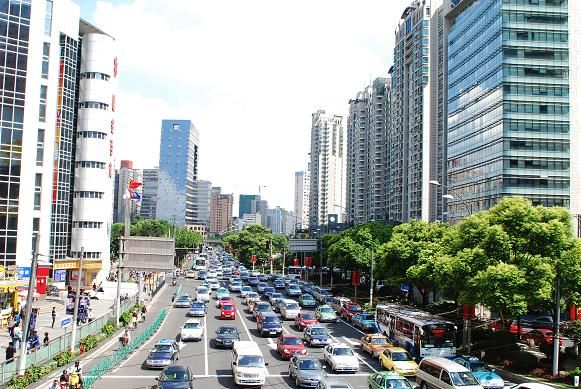A new paradigm for urban planning
The demographic and economic shifts of the last two decades have transformed cities and urban centres into the dominant human habitats. Cities have a disproportionately large effect on climate change, contributing as much as 70 per cent to global greenhouse gas emissions, while occupying as little as 2 per cent of the land, according to UN-Habitat’s latest Global Report on Human Settlements, Cities and Climate Change.

The way our cities develop has a critical bearing on the success or failure of sustainable development. The cities of the world’s emerging economies are becoming the drivers of the global economy while the planet’s resources are rapidly being depleted. Without effective urban planning this can result in urban sprawl, the degradation of the environment and the proliferation of slums. We must urgently find a way to achieve economically and socially equitable growth without further cost to the environment or increase in urban inequality.
Over the course of the United Nations Rio+20 Summit, we shall hear a great deal of discussion about the way forward on sustainable development. It is more critical than ever that United Nations member states and agencies put sustainable urbanisation at the heart of these discussions. When managed poorly, urbanisation can be detrimental to sustainable development. However, when urban planning is efficiently implemented, cities can contribute positively to reducing per capita greenhouse gas emissions and improving the standard of living for all citizens.
‘Green’ cities?
The current design of many cities is based primarily on a 20th-century model with a focus on zoning areas for specific and exclusive land use. However, this model results in sprawl, segregation and congestion, with many cities actually experiencing negative economies of aggregation, suffering from the problems without realising any of the benefits.
The disadvantage of the traditional model is that it creates a heavy demand on workforce mobility, with large numbers of people needing to travel great distances each day. In the absence of adequate public transport provision, this need is naturally addressed by an increase in private automobile use. This was not a problem for developed countries in the boom time of cheap oil prices; it is more of a challenge now that oil prices are consistently higher than US$100 per barrel and assumed to be increasing over time. As a result, many cities now find themselves locked into an unsustainable model of urbanisation characterised by motor car dependence, segmented urban form, segregated land use and predominantly private interests.
Cities developed in this mode can appear to have a great deal of trees and vegetation, and properties with large grounds. However, more greenery does not in itself make a city green, especially if the provision of such green space means that the residents have to consume more fossil fuels to travel around their sprawling city.
In addition, with this kind of urban planning, as prices in more desirable residential areas grow, fewer options become available for affordable housing; and lower-income workers are forced to move out of the city. According to UN-Habitat, in some cities, transport can cost the poor as much as 30 per cent of their wages. This is when slums start to appear to fulfil the need for affordable and accessible housing on land that is close to employment opportunities. However, these areas are characterised by poor provision of basic services, inadequate construction standards, crowded conditions and a lack of security of tenure for the residents.
Good density versus bad density
Slums and informal settlements are assumed to be very high in density, with no planning of buildings and not much area allocated to public spaces or streets. In the Kibera slum in Nairobi, as little as 3 per cent of the land is taken up by streets, compared with Manhattan, New York, where streets account for around 36 per cent of the land. On the other hand, Kibera’s density is roughly 16,000 people per acre compared with 56,000 in Manhattan. Manhattan’s density is more than three and a half times as great as Kibera’s, yet its standard of living is much higher.
We often think of density as something to be avoided, and yet the majority of greenhouse gas emissions in a city are produced by transport, energy production and construction, all of which are more expensive, harder to deliver and more environmentally damaging in less compact cities. Overcrowding needs to be avoided, but with proper planning and service provision, density can work to the advantage of a city and its residents.
For too long cities have been seen in a negative light as centres of high crime and poverty, with many countries, especially in sub-Saharan Africa, even adopting specific policies aimed at halting or reversing rural to urban migration in past decades. Not only is this unrealistic but it is undesirable. Cities present unique opportunities for poverty eradication and achievement of the Millennium Development Goals if planned appropriately. Cities account for as much as 80 per cent of a country’s Gross Domestic Product (GDP), offering employment and opportunities for economic growth. To date, no country has achieved high standards of living without urbanisation.
Planning for the urban future
The key to harnessing the beneficial opportunities of cities lies in planning. The role of city planners and authorities is to provide the infrastructure that enables and facilitates business.
Urban planning should be done in a realistic manner, based on the projected number of people that will need housing and services in coming years. Planning can be done in phases, with emphasis initially on reassigning rural land for urban use and allocating between 20 and 30 per cent of land to streets.
Most importantly, planners need to re-embrace the mixed-use city. Cities and their component neighbourhoods need to be compact, integrated and connected. Compact cities minimise transport and service costs, reducing the cost of production and encouraging private investment. Sustainable urban development requires a shift away from the mono-functional city of low density and long distances, which is poorly connected, socially divided and economically inefficient.
In addition, compact cities are better able to provide affordable housing for lower income workers, helping to avoid the emergence and proliferation of slums. Good urban planning and design should establish minimum densities, optimised street connectivity and social mix with a variety of housing prices within an area.
In order to do this successfully, spatial planning should be done at national, regional and local levels to ensure a comprehensive approach that takes into account each city’s needs but at the same time looks at the overall country’s assets and progress. Greater emphasis should be placed on local authorities and planners to enable them to implement city plans that are relevant to their citizens while also feeding into the country’s socioeconomic growth. National Urban Policies are important instruments to achieve balanced territorial development and to take advantage of the benefits of urbanisation while avoiding negative externalities.
Urban opportunities
The good news is that in many developing countries where urbanisation is greatest there is a distinct opportunity to harness the growth of cities for positive socio-economic development. Compact cities, with well designed services and infrastructure, reduce the transaction costs of production and take advantage of the economies of agglomeration. Housing and transport are more affordable and the impact on the environment, in terms of energy use and greenhouse gas emissions per capita, is reduced. A smart efficient city is more likely to attract private investment, further reducing the burden on state resources.
The three pillars in planned urbanisation
When it takes place in a planned and sustainable manner, urbanisation can provide one of the key unifying forces to integrate the three pillars of sustainable development – economic, environmental and social. Efforts to reduce our environmental footprint should not be seen in contradiction to policies for job creation or improvement in standards of living but, on the contrary, are more achievable when addressed in tandem. Prioritising sustainable urbanisation can also help to streamline policies on service provision, further lowering the cost of implementation and encouraging public-private sector partnerships. It is vital that this emerging opportunity be recognised and endorsed at Rio+20.
UN-Habitat stands prepared to support member states and local government organisations in the lead up to Rio+20 and beyond, to develop targets, indicators, policies, plans and strategies related to sustainable cities, in collaboration with other UN agencies. The proposed Sustainable Development Goals and the Habitat III Conference scheduled for 2016 would provide concrete mechanisms to strengthen co-operation, partnership arrangements and other implementation tools which will help implement the sustainable urbanisation agenda.








